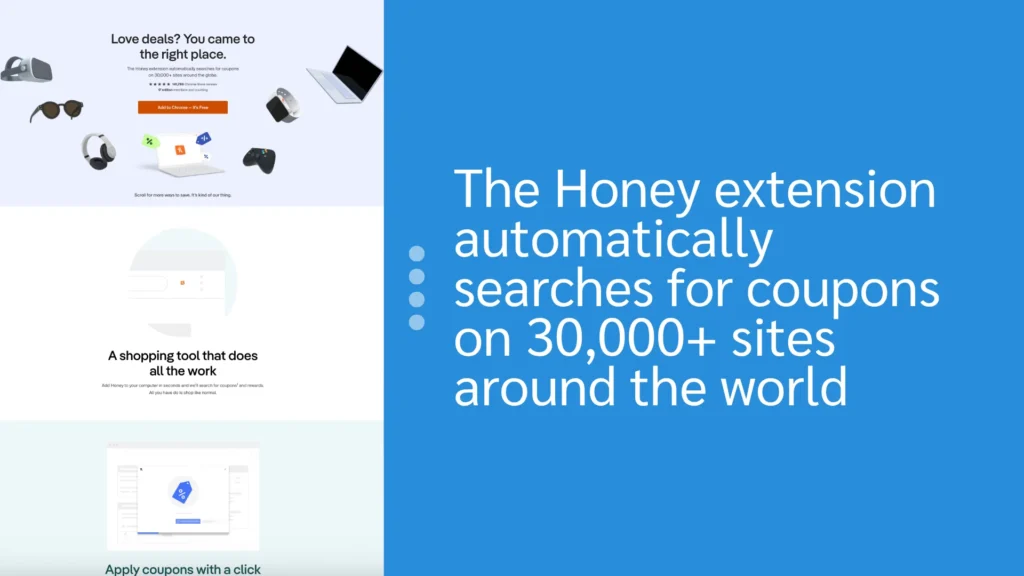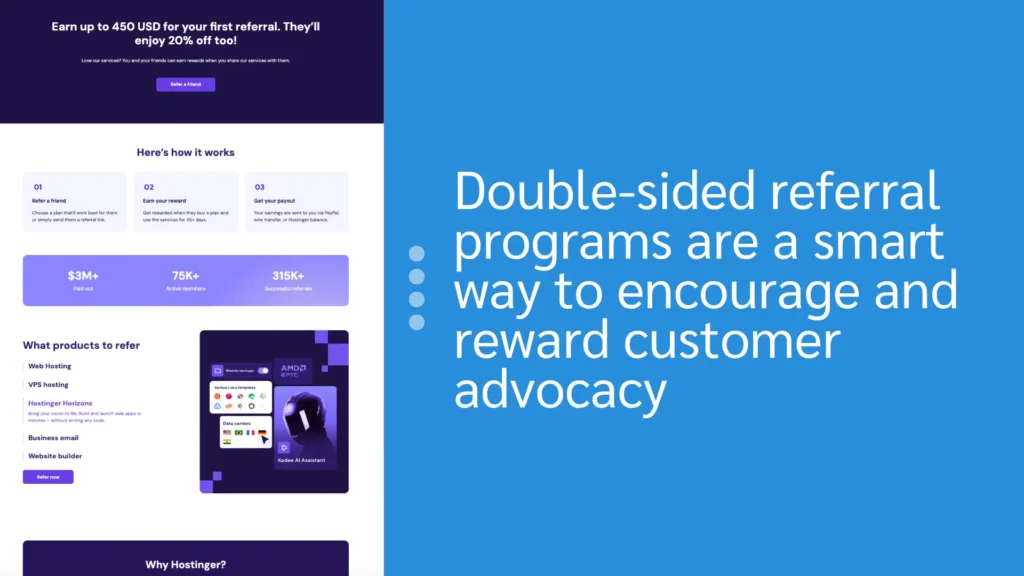Most brands rely heavily on traditional affiliate partnerships. But something interesting is happening in the partnership world. The lines between affiliates, social creators, and customer advocates are blurring.
Stephanie Harris has seen it all. As founder and CEO of PartnerCentric, she’s helped major brands like Visible and CarGurus transform their growth through smarter partnership strategies.
“The client mix that we have now looks very different from the one we had during COVID, post COVID, last year,” Harris explains. The players change, but the goal remains the same: finding trusted voices who can reach customers you couldn’t otherwise reach.
Marketing leaders across industries are increasingly bringing affiliate and influencer programs under unified management. They’ve recognized that keeping these channels in separate silos just doesn’t make sense anymore.
What does this mean for your brand? A chance to build something more powerful than traditional affiliate marketing alone – a three-dimensional strategy that combines the best of affiliates, creators, and your own customers.
In this article, you’ll discover:
- How to build a partnership strategy that leverages affiliates, creators, and customer advocates
- Practical ways to implement hybrid payment models that balance guaranteed fees with performance
- Simple techniques for turning your customers into your most authentic marketing channel
- Steps to unify management across different partner types without creating chaos
- Smart approaches to protect your partnership strategy from AI disruption in 2025
The partnership revolution: How affiliate and creator worlds are merging
Remember when affiliate marketing meant mostly coupon sites and deal blogs? Stephanie Harris does. With over 20 years in the industry, she’s watched affiliate marketing grow from simple link partnerships into something far more diverse and powerful.
“We’ve both been in this space a very long time, more time than I want to admit,” Harris explains with a laugh. “I would say that it’s the same conversation we’ve always had with brands.”
That conversation? How to expand beyond the same top-performing partners and tap into new audiences through trusted voices.
From old-school partnerships to modern creator collaborations
When Harris started in affiliate marketing, the industry looked completely different. Brands sent physical catalogs to potential partners. Publishers would manually add links to their websites. Everything moved more slowly.
“Back when I was an account manager, 15, 18, 20, 22 years ago, we were having conversations with data feed affiliates and bloggers about how they can do more with the programs,” Harris recalls.
As digital media grew, so did partnership opportunities. First came content sites and blogs. Then YouTube creators joined the mix. Now TikTok and Instagram influencers dominate partnership conversations.
What hasn’t changed is brands’ fundamental need to find authentic voices who can reach audiences they couldn’t otherwise reach.
When worlds collide: Partnership marketing combines affiliate and influencer tactics
For years, influencer and affiliate programs operated in separate universes. Influencers typically received flat fees for posts, while affiliates earned commissions on sales. The teams managing these programs rarely coordinated strategies.
But forward-thinking brands have realized these artificial divisions don’t make sense. Both channels leverage trusted third-party voices to reach customers.
“Clients continue to want to have a conversation around how to push these types of authentic conversations into the affiliate space and pay them on a performance basis,” Harris explains.
The challenge? Finding the right partnership model. Macro-influencers with massive followings still command pay-per-post fees. But mid-tier and micro-influencers increasingly accept hybrid models that combine upfront payments with performance incentives.
Image source: @vivacious_wish
The missing piece: Customer advocacy partnerships
While brands have focused on affiliates and influencers, many have overlooked their most powerful asset: existing customers who already love their products.
“The most direct way is through people who are already their customers,” Harris points out. “We’d love to have you join it. You may as well be earning commissions on something that you’re likely already talking about.”
These customer advocates represent “the lowest hanging fruit for high conversion, incremental activity,” according to Harris. Yet surprisingly, many brands don’t have robust customer referral programs in their partnership mix.
This third dimension—customer advocacy—completes the modern partnership marketing strategy by adding genuine user experiences to the voices promoting a brand.
Why partnership consolidation matters now
The push to unify affiliate and creator partnerships goes beyond organizational efficiency. It’s about survival as competition intensifies and companies fight harder for customer attention and market share.
Traditional digital advertising faces mounting challenges. Ad blockers continue to rise. Privacy changes make targeting harder. And as Harris warns, AI will soon disrupt search behavior in ways that will diminish paid search effectiveness.
“A referral program or tapping into a current customer and bringing that back into your affiliate program may be one of the few ways in 2025 that you may be able to ChatGPT-proof some of your marketing spend,” Harris explains.
When consumers start their product searches with AI tools rather than Google, brands that have invested in authentic human recommendations through partnership marketing will have a significant advantage.
The message is clear: brands that continue to keep these partnership channels siloed are missing out on a powerful opportunity to future-proof their marketing strategy.
The three-dimensional partnership strategy: Combining affiliates, creators, and advocates
Success in partnership marketing isn’t about choosing between affiliate marketing, influencer collaboration, or customer advocacy. It’s about strategically combining all three to create a comprehensive approach.
Let’s examine each dimension and how they work together to create a powerful partnership marketing engine.
Traditional affiliates: The performance foundation
Traditional affiliate partners remain the backbone of most partnership programs. These include:
- Coupon and deal sites
- Cashback and loyalty platforms
- Comparison shopping engines
- Review sites and content publishers
- Browser extensions and toolbars

Image Source: Honey
What makes these partners valuable is their consistency and scale. They deliver predictable performance with minimal management once properly set up.
“Most people call it stock. We tend to call and lean in on pre-shot,” explains Harris, describing how these partners often work with established content libraries rather than creating custom materials for each brand.
But not all traditional affiliates are created equal. Harris points out that even within specific categories like browser extensions, performance varies:
“Even painting a wide brush around toolbars doesn’t do each toolbar justice. If it’s Honey or Rakuten or Capital One Shopping, each one in our data set shows a different level of incrementality across our clients.”
This highlights why partnership data matters so much. Generic assumptions about partner types often miss crucial nuances in performance.
Creator partnerships: The authentic voice
The creator economy has exploded, with millions of content creators building engaged audiences across platforms. These partners bring something traditional affiliates often can’t: authentic personal recommendations and storytelling.
For brands, the challenge has been moving creators from expensive flat-fee arrangements to performance-based models. Harris notes that this transition is gradually happening through hybrid payment structures.
“When we were doing the prep call, you referenced … what people would call like, performance PR, these sort of sites that were acting as this trusted referral source,” Harris explains, highlighting how these content creators effectively function as trusted advisors.
The value of creators lies in their ability to:
- Demonstrate products in action
- Share authentic experiences
- Reach niche, highly engaged audiences
- Create content brands can repurpose
This dimension adds credibility and connection that traditional affiliate partners may lack.
Customer advocacy: The trusted recommendation
The third dimension—and often the most overlooked—is customer advocacy. These are your existing customers who already love your products and can become powerful marketing assets.

Image source: Hostinger referral program
“The most direct way is through people who are already their customers,” Harris emphasizes. “You’re already a customer of so-and-so and we run their affiliate program. We’d love to have you join it.”
Why do customer advocates make such effective partners?
- They’ve already experienced your product firsthand
- Their recommendations carry authentic credibility
- They can speak to specific benefits from personal experience
- Their conversions often show higher average order values
Harris emphasizes that these advocates offer exceptional conversion rates and incremental revenue, yet many brands haven’t fully tapped this resource.
Creating a cohesive three-dimensional strategy
The real power comes when brands integrate all three dimensions into a cohesive strategy.
For example:
- A customer advocate creates authentic content about your product
- You amplify this content through your creator partners
- Traditional affiliates provide scale and reach
- All partners are incentivized with the right mix of upfront payments and performance-based commissions
The result? A partnership ecosystem that delivers authentic recommendations at scale, without the fragmentation and missed opportunities that come from running these programs separately.
As Todd Crawford, Co-founder and VP of Strategic Initiatives at impact.com, notes in the podcast: “It sounds simple, and I’m sure a lot of people are already doing this, but taking that user-generated content from the creators, getting rights to that, and using it in your own social media posts, really gives you far more sales than just creating your own content.”
This approach creates a virtuous circle where each partnership dimension strengthens the others, delivering more value than any could provide alone.
Pro tip: Don’t limit partners to a single role. Your best traditional affiliates might also be great content creators. Your customer advocates might have significant social followings. Allow partners to contribute in multiple ways rather than forcing them into rigid categories.
Building your diversification strategy: How to expand beyond traditional affiliates
Creating a three-dimensional partnership program sounds great in theory, but how do you actually implement it? Let’s break down the practical steps to build a diversified partnership strategy that combines affiliates, creators, and advocates.
Audit your current partnership mix
Start by understanding what you already have. Most brands discover their partnership portfolio is heavily skewed toward traditional affiliates, with limited creator relationships and minimal customer advocacy.
“When a brand is in-housing a program, it kind of devolves to the lowest common denominator and they end up working with a lot of the affiliates that maybe they’re not as excited about,” Crawford explains. “They don’t have that diversification, but it’s easy because they’ve got a handful and they don’t have to worry about recruiting.”
Take inventory of:
- Your top-performing partners by revenue
- Partners who drive new customer acquisition
- Partners who influence purchasing decisions early in the funnel
- Partners who primarily capture existing demand
This assessment will reveal gaps in your partnership strategy that need addressing.
Identify your untapped customer advocates
Your existing customers represent your most immediate opportunity to diversify partnerships. These people already know and trust your brand.
“We’d love to be able to see who is a current customer of our clients and that is also in the affiliate ecosystem,” Harris explains. “We can reach out and talk to them about, ‘Hey, you’re already a customer of so-and-so and we run their affiliate program.'”
To identify potential customer advocates:
- Look for repeat purchasers with high lifetime value
- Review customer satisfaction surveys for enthusiastic responses
- Monitor social media for customers posting organically about your products
- Analyze product reviews for detailed, passionate feedback
These customers are already promoting your brand—they just aren’t being recognized or rewarded for it yet.
Image Source: @xojalyssa
Build your creator recruitment strategy
When expanding to creator partnerships, focus on relevance over reach. A micro-creator with 10,000 highly engaged followers in your niche often delivers better results than a macro-influencer with millions of general followers.
Harris notes that finding the right creators requires research: “We do a tremendous amount of research right where we’re looking at industries that are happening.”
Your creator recruitment plan should include:
- Identifying creators whose audience aligns with your target market
- Researching their content style and brand alignment
- Starting with performance-based models for micro and mid-tier creators
- Reserving hybrid payment models for proven performers
Implement hybrid payment models
The key to sustainable creator partnerships is finding payment structures that work for both parties. This often means hybrid models that combine:
- Base payments to support content creation
- Performance incentives to reward results
- Exclusive perks or early access to new products
- Content licensing fees for reusing creator content
“A lot of times it’s just different companies move at different paces,” Crawford observes. “There’s, you know, politics involved, you know, wait, why does this other team want what I’m doing?”
Crawford suggests a “PostPlus” approach where creators receive support for content creation plus commission incentives for sales—a fair exchange that benefits both parties.
Create unified management processes
Managing three different partnership dimensions can quickly become chaotic without the right processes in place.
“Eighty-six percent of the respondents to our research leverage an agency to support one or both of those channels,” Crawford notes, highlighting how many brands rely on partnership experts to manage this complexity.
Whether you work with an agency or manage in-house, establish:
- Clear partnership categorization and tagging
- Standardized onboarding processes for each partner type
- Consistent communication cadences based on partner needs
- Unified tracking and attribution across all partnership types
Connect the partnership dimensions
The real magic happens when your partnership dimensions work together rather than in isolation.
“When you, when most brands look across their marketing mix, affiliate is still has the best return on ad spend,” Crawford points out. This makes it an ideal channel to experiment with new partnership approaches.
Consider these connection points:
- Have creators create content featuring customer stories
- Turn your best-performing affiliates into brand ambassadors
- Highlight creator content on your affiliate network
- Use customer feedback to inform creator briefs
- Create exclusive offers that all partner types can promote
Pro tip: If you’re struggling to unify your partnership dimensions, consider running a small pilot program first. Select a specific product line or promotion to test your integrated approach before rolling it out broadly.
The hybrid payment model: Creating sustainable creator relationships
Building a partnership strategy isn’t just about who you work with—it’s also about how you compensate them. The right payment approach can make the difference between short-term campaigns and long-term partnership growth.
Why traditional payment models fall short
Historically, brands have used two distinct payment approaches:
For traditional affiliates:
- Commission-only payments
- Last-click attribution
- Limited upfront investment
- Highly measurable ROI
For influencers/creators:
- Flat-fee payments (pay per post)
- Front-loaded costs
- Measurement focused on engagement
- Difficult to tie directly to sales
Both models have limitations. Commission-only models can deter creators who need upfront support. Flat-fee arrangements put all the risk on the brand and lack performance incentives.
“The typical consumer journey starts at research,” Crawford explains. “So adding that customer voice out there as well really can add that third, I guess, leg to the stool where you can’t really get that through AdWords or, you know, paid search or programmatic.”
Introducing the “PostPlus” approach
The solution? What Crawford calls a “PostPlus” model that combines the best of both worlds:
“We call it PostPlus, where I think it’s a fair trade-off. Hey, we’ll help support the content creation, but we want to incentivize you to drive sales and we wanna pay you on those sales.”
This hybrid approach provides:
- Upfront payment to support content creation costs
- Performance-based commissions to reward results
- Aligned incentives between brand and creator
- Sustainable economics for long-term relationships
“Of course, creators prefer to be paid upfront flat fees. Who wouldn’t, right?” Crawford acknowledges. “But I think as the dust settles in the coming years, this hybrid payment is gonna make sense for everyone.”
Implementing tiered partnership models
Not all creators are the same. Smart brands segment their partners and adjust payment models accordingly:
Macro-influencers (100K+ followers)
- Higher base fees plus lower commission rates
- Exclusive product drops or collaborative products
- Content licensing rights included in agreements
Mid-tier creators (10K-100K followers)
- Moderate base fees with higher commission rates
- Product seeding plus performance incentives
- Longer-term relationship focus
Micro-creators (Under 10K followers)
- Lower or no base fees with higher commission rates
- Product sampling as primary compensation
- Focus on authentic product experiences
- Opportunity to grow into higher tiers
Each tier receives payment structures aligned with their reach and impact, creating clear incentives for growth.
From campaigns to “always on”
The hybrid model enables a crucial shift from short-term campaigns to continuous partnership relationships.
“Most people who run the influencer channel are running campaigns and new product launch, new promotion, new service offering,” Crawford points out. “They recruit 10, 20 creators to do something over a short period of time. And so they have to constantly be coming up with new campaigns to sustain that exposure.”
The hybrid model changes this dynamic:
“When you start putting them more into the performance channel, they can actually sign up and find products they want to promote, possibly request to get a product so they can review it hands on.”
This creates what Crawford calls an “undercurrent of transactions” without constant campaign development—a more sustainable approach for both brands and creators.
Image source: @samuelcasillasoficial
Building trust through transparency
For hybrid models to work, transparency is essential. Creators need to understand:
- Exactly how commissions are calculated
- When and how payments are processed
- What performance expectations exist
- How attribution works across channels
“They can kind of rise out of that ether and get pulled into some campaigns that you maybe never would have even seen or known about much less have been approved to,” Crawford explains, highlighting how performance-based relationships can lead to bigger opportunities.
Pro tip: Start with small test groups rather than immediately shifting all creator relationships to hybrid models. This allows you to refine your approach based on real results before scaling.
Putting it all together: The future of partnership marketing
Partnership marketing is entering a new phase. Brands that combine traditional affiliates, creators, and customer advocates into a cohesive strategy will have a significant advantage going forward.
Turn customers into your most powerful partners
“The most direct way is through people who are already their customers,” Harris emphasizes. These existing customers provide the perfect combination of authenticity and conversion efficiency that other partnership types struggle to match.
Yet surprisingly, many brands overlook this opportunity. A simple audit of your customer base can reveal passionate users who are already promoting your products without recognition or reward.
Consider implementing:
- A structured customer referral program integrated with your affiliate platform
- Recognition and status tiers for your most active advocates
- Easy tools that help customers share their authentic experiences
- Performance rewards that acknowledge their contribution to your growth
Measure what matters across all partnership types
As partnerships become more diverse, measurement must evolve beyond basic last-click attribution:
“We do a lot of benchmarking of programs, and you see a lot of high-potential partners that have just stopped promoting them for one reason or another, and the brand doesn’t know why,” Crawford points out.
Smart brands are tracking:
- Partner-influenced revenue (not just last-click)
- New customer acquisition rates by partner type
- Customer lifetime value from partnership-sourced sales
- Content engagement across the consumer journey
This fuller picture helps identify which partnership investments deliver the best long-term results.
Looking ahead: Future-proof your partnership strategy
As we approach 2025, partnerships will become even more crucial as traditional digital marketing faces disruption.
“A referral program or tapping into a current customer and bringing that back into your affiliate program may be one of the few ways in 2025 that you may be able to ChatGPT-proof some of your marketing spend,” Harris warns.
When consumers start asking AI tools rather than search engines for product recommendations, authentic human advocates will become even more valuable.
To prepare for this future:
- Diversify your partnership mix beyond traditional affiliates
- Implement hybrid payment models that reward authentic content creation
- Activate your customer base as marketing partners
- Invest in relationship management rather than transactional approaches
The partnership advantage
“I think there’s so much potential here,” Crawford concludes. “Right now I feel like it’s the most exciting times in this industry since the late 90s when I jumped in because there is so much more diversification.”
The brands that succeed won’t be those with the biggest budgets, but those who build the most authentic, diverse partnership ecosystems. By bringing together affiliates, creators, and advocates, you create a powerful marketing engine that delivers trusted recommendations at every stage of the customer journey.
The question isn’t whether you should diversify your partnership approach—it’s how quickly you can get started. Ready to build your three-dimensional partnership strategy? Contact PartnerCentric to learn how their team of experts can help your brand harness the power of affiliates, creators, and advocates.
Looking for more? Dive into impact.com’s guides on creator partnerships, affiliate strategies, and marketing innovation.
- The convergence strategy: Transforming affiliate and influencer channels to accelerate growth [research report]
- Affiliate marketing: How to give your business the strategic edge [ebook]
- Customer referral marketing research: A customer perspective [research report]
- The ultimate guide to influencer tiers: From nano creators to megastars [ebook]
- Turn loyal customers into revenue-generating advocates with referral marketing [ebook]
- The modern customer journey: Understanding multichannel discovery, research, and purchase patterns [research report]
- Search and partnerships: How to find and recruit partners for your affiliate and influencer marketing [ebook]




